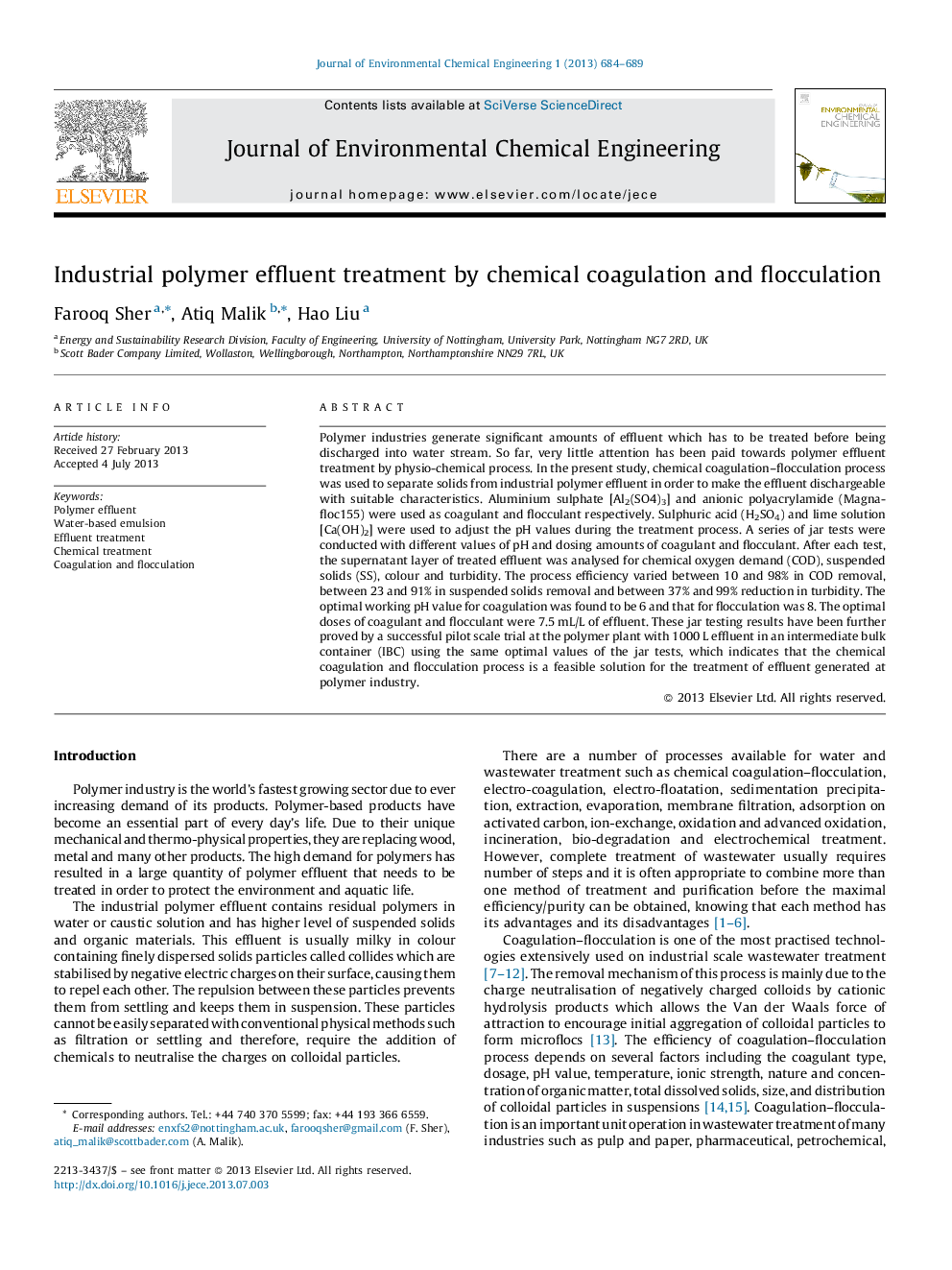| Article ID | Journal | Published Year | Pages | File Type |
|---|---|---|---|---|
| 222454 | Journal of Environmental Chemical Engineering | 2013 | 6 Pages |
Polymer industries generate significant amounts of effluent which has to be treated before being discharged into water stream. So far, very little attention has been paid towards polymer effluent treatment by physio-chemical process. In the present study, chemical coagulation–flocculation process was used to separate solids from industrial polymer effluent in order to make the effluent dischargeable with suitable characteristics. Aluminium sulphate [Al2(SO4)3] and anionic polyacrylamide (Magnafloc155) were used as coagulant and flocculant respectively. Sulphuric acid (H2SO4) and lime solution [Ca(OH)2] were used to adjust the pH values during the treatment process. A series of jar tests were conducted with different values of pH and dosing amounts of coagulant and flocculant. After each test, the supernatant layer of treated effluent was analysed for chemical oxygen demand (COD), suspended solids (SS), colour and turbidity. The process efficiency varied between 10 and 98% in COD removal, between 23 and 91% in suspended solids removal and between 37% and 99% reduction in turbidity. The optimal working pH value for coagulation was found to be 6 and that for flocculation was 8. The optimal doses of coagulant and flocculant were 7.5 mL/L of effluent. These jar testing results have been further proved by a successful pilot scale trial at the polymer plant with 1000 L effluent in an intermediate bulk container (IBC) using the same optimal values of the jar tests, which indicates that the chemical coagulation and flocculation process is a feasible solution for the treatment of effluent generated at polymer industry.
